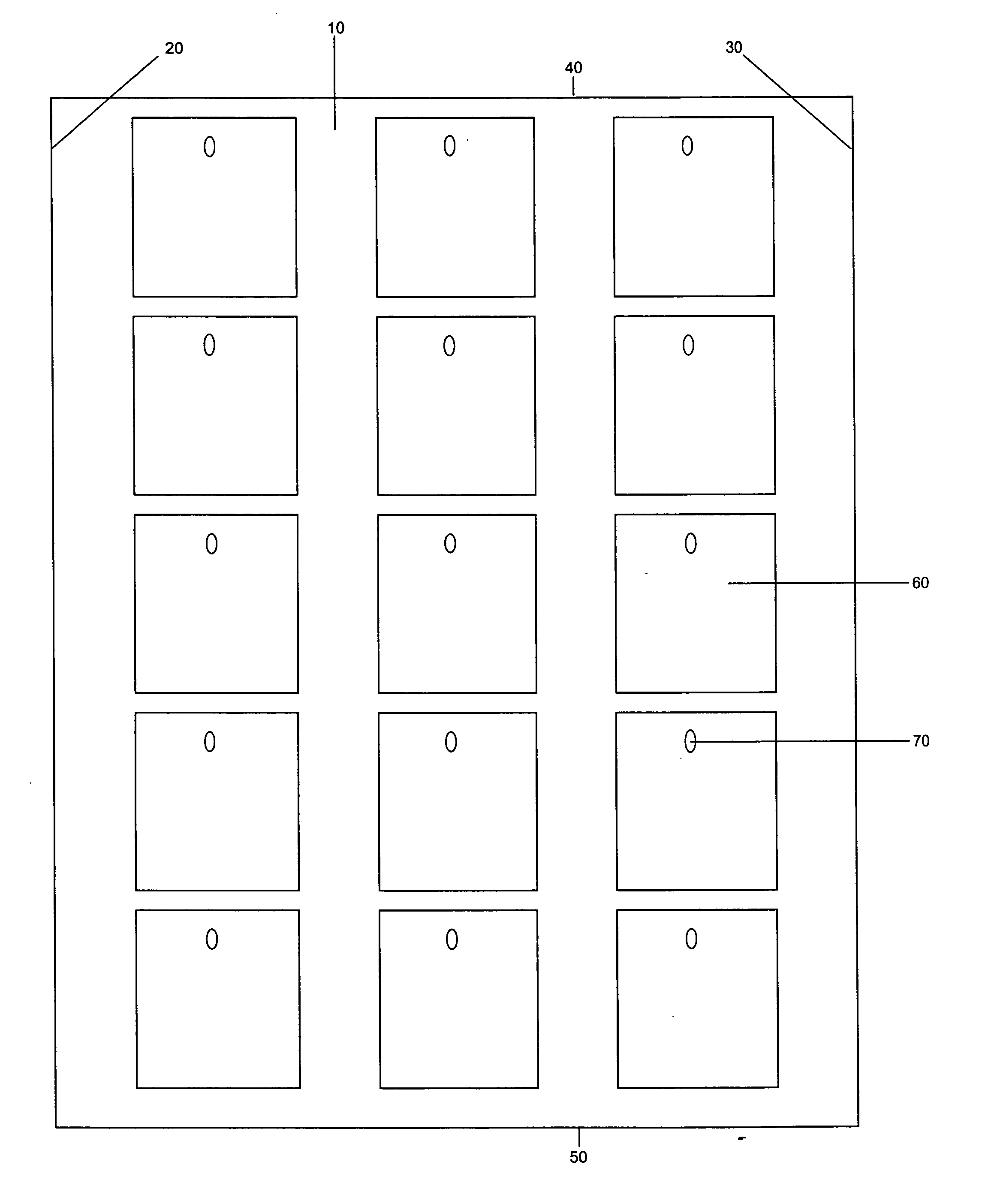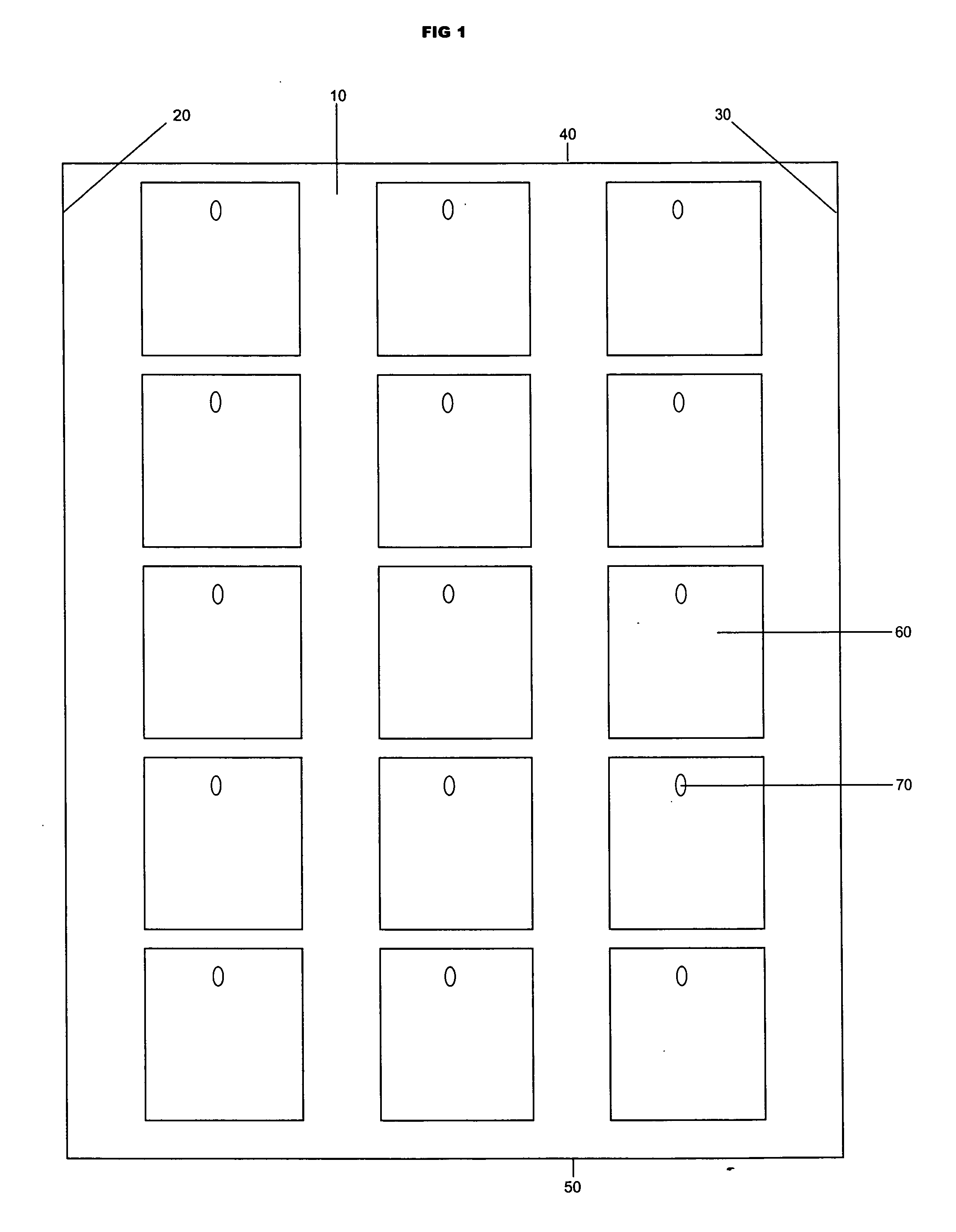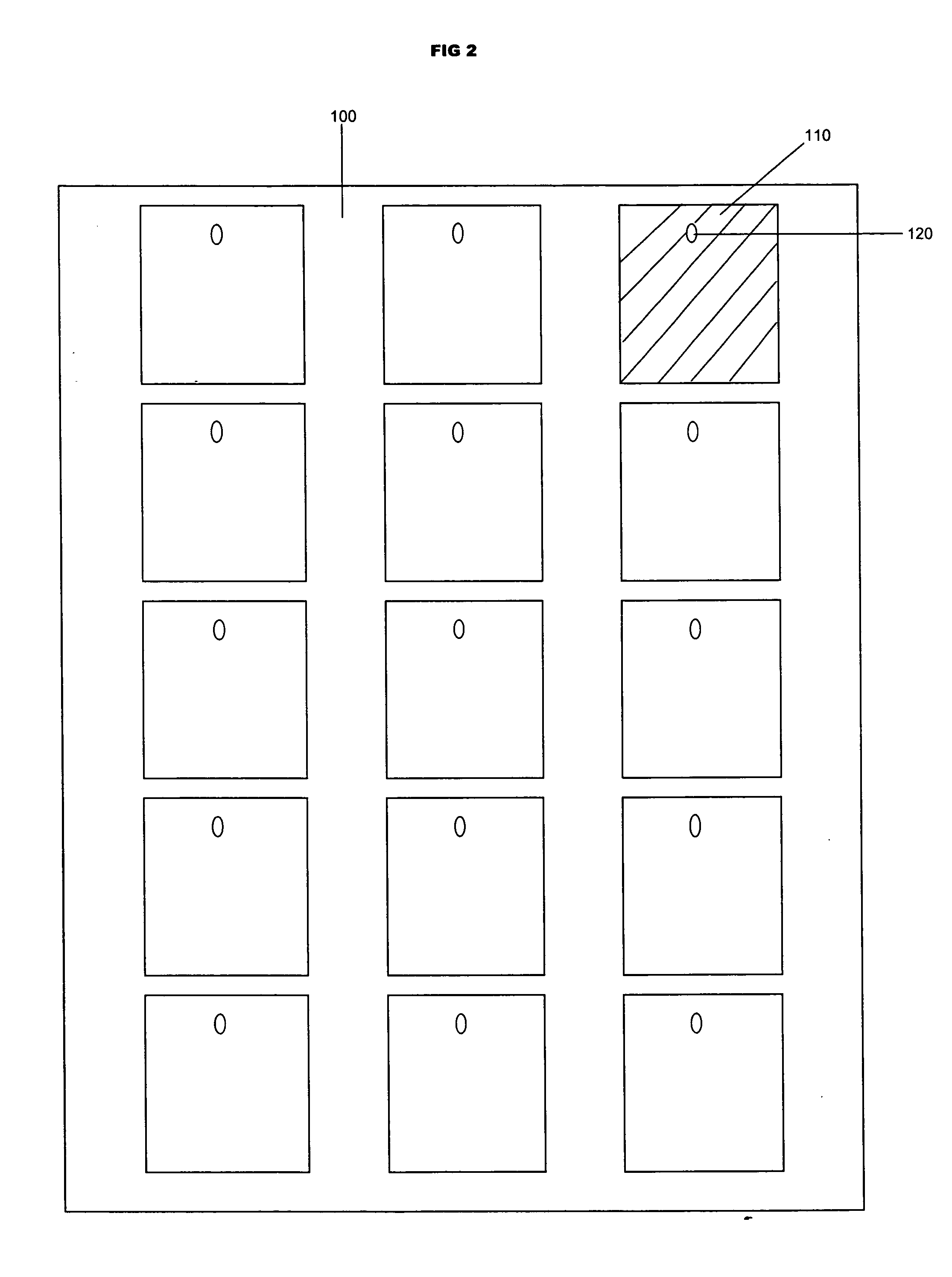However, many of the products suffer from one or more drawbacks particularly when used in certain identification applications.
These individualized or special applications makes use of such prior art assemblies cumbersome, difficult or contributes to having to undertake additional steps or procedures in order to effectively use the tag or
label assembly in the prior art configurations.
However, labels are not suitable for all applications particularly where any exposed
adhesive is a concern.
In addition, even in those situations where adhesive contact is expected, the labels may leave behind adhesive residue on the initial surface to which the
label was applied leaving the customer with an unwanted tacky substance which may mar, distort or otherwise take away from the appearance of the item from which the
label has been removed.
In addition, the label can leave a “gummy” residue on the
textile product, which if a
consumer intends to wear the product, the residue first needs to be carefully removed.
In addition, if the exposed adhesive of the label catches another portion of the garment or article to which it is attached, the label may remain hidden from view thereby defeating the purposes of applying the identification piece.
If the alignment is not completely accurate, then there may be adhesive exposed in the assembly, leading to the problems identified above of unwanted adhesive contact.
In addition, improper alignment may take away from other aspects of the assembly or the merchandise to which it has been applied.
Moreover, such self laminating assemblies require the additional
user interface (folding, alignment, etc.), to form or create the self laminating arrangement, thus requiring additional labor which proportionately increases the cost of application this ultimately is likely passed along to the
consumer.
In addition, the tags may be preprinted with indicia but typically do not lend themselves to automated
personalization processes, in that the tags are typically not provided in a standard sheet format and may only come in, for example, one inch by two inch sizes or other configurations that are not readily adaptable to
processing through a
laser or ink jet printer.
However, this requires the additional steps of printing and applying the additional label as well as the cost of the supplemental structure.
While the use of tags overcomes some of the problems with labels, of not having any exposed adhesive or leaving behind adhesive residue they still suffer from additional drawbacks in that they require supplemental labor involvement in order to complete the tag.
However, this defeats the purposes of the so called “dry technology” as the exposed surfaces, revealed upon separation from the assembly, are not completely dry and instead have a wet area.
Such a situation is generally undesirable in connection with the apparel and
textile industry as any wet chemicals, adhesives, or the like can soil or
stain the textile or apparel piece.
However, such products unfortunately still can suffer from a number of drawbacks and disadvantages in that if the bond between the layers of the material is to aggressive or strong then upon separation, for example through peeling or delaminating force, the portions or components of the form will tear or rip apart thereby destroying the functionality of the form construction.
That is, the portions will suffer from “
fiber tear” where a portion (usually the face or back) of one layer detaches or delaminates and remains with the other layer thus creating the appearance of ripping or a defective tag.
This creates an undesirable effect, in that it makes the removed layer appear as if it had been tampered with because of the appearance of the torn
fiber.
Moreover, the layer may no longer be readily adaptable to receiving additional information due to the surface deformations.
When this occurs, this will likely require the user to have to poke out the hole or remove the die
cut portion in order to utilize the tag.
Too much force can damage the tag leading to waste, not to mention
frustration of the user as the tag can be destroyed or otherwise distorted in appearance.
The creation of dry technology products can also be expensive in that manufacturing process for this type of technology has heretofore typically required a plurality of steps in order to create a sufficient seal that will bind the two layers together.
The difficulty with this process is that once the curing energy has been applied directly to the
coating layer, there is only a finite amount of time in which to apply the second sheet or web.
If the second sheet or web is applied prematurely, the coating will not properly cure and the sheets will not be adequately laminated together and hence the sheets may splay or shift out of alignment with one another, which is referred to as a “loose” arrangement.
This loose arrangement can subsequently cause printer
jams and jamming of other
processing equipment as the edges of one or more sheets can catch on the edges of the equipment.
Over curing of the exposed coating material can also occur and may result in a “tight” arrangement in which the sheets when pulled apart will suffer from
fiber tear that is a portion of one sheet will be torn off and left behind on the other sheet, generally making the sheets unusable.
If one waits too long to apply the second sheet or web, the coating can then dry out and the formation of a bond between the two sheets is likely impossible.
Thus, if the process and timing are not closely monitored, the sheets, webs and coatings can be wasted not to mention the time the operator spent in preparing the product.
However, this process in addition to the difficulties enumerated above with respect to careful control of the timing of the curing and placement of the webs also suffers from the drawback in that it requires additional materials, such as a
silicone coated first liner and as such can be more costly to produce.
With
business forms, it is very difficult to maintain constant conditions for the business form from manufacture, during shipment and handling to use by the
end user.
As such, an arrangement would not lend itself to
multiple applications, particularly as they relate to apparel or textile uses.
In addition, the foregoing arrangement is a relatively complex assembly requiring a business form, card, patch and coating to be applied in a particular sequence.
In addition, such a construction would also likely not be printable in a non-
impact printer due to the difficulties associated with the “hump” or bump created by the raised area of the card / patch.
 Login to View More
Login to View More  Login to View More
Login to View More 


